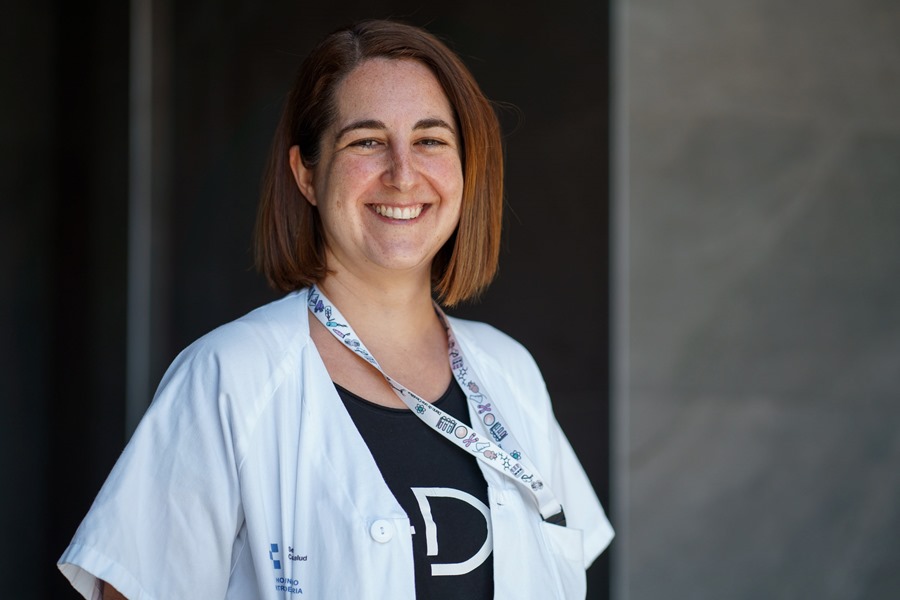Anna Santana |
Santa Cruz de Tenerife (EFE).- Researchers at the Hospital de La Candelaria in Tenerife have created a mouse avatar of Nacho, a boy from Barcelona, with the aim of helping to treat the rare kidney pathology he suffers from, Dent’s disease, in a project financed thanks to the impulse of the mother of the little one, Eva Giménez, who has managed to involve actors and professional cyclists.
And although the mouse is an avatar of Nacho, that is, it has been created with the same mutation, in the end it will help other children who suffer from the same pathology, a rare disease that some 70 families in Spain suffer from and some 700 worldwide. the world, explains to EFE the biologist Ana Perdomo, a member of the research group at the Nuestra Señora de La Candelaria University Hospital in Tenerife.
Ana Perdomo is a post-doctoral fellow in the “Margarita Salas” call and will precisely divulge the history of this research on Wednesday in the talk “Avatar mice: the sense of studying the rare”, included within the “Pint of science” initiative in The lagoon.

A disease with no cure
But to tell this story, we have to go back 25 years, when the researcher at the Félix Claverie hospital in Tenerife and the pediatric nephrologist Víctor García, who were studying the clinical and genetics of rare kidney diseases, started a project to carry out free genetic tests on children with these pathologies.
This was the germ of the “Renaltube” group, in which the hospitals of Oviedo, Cruces in Bilbao and Vall d’Hebrón in Barcelona also participate.
It was precisely in the Barcelona hospital where Nacho was admitted “practically dead” about ten years ago, when he was barely 2 years old, and it was found that the child’s kidneys were failing.
One of the nephrologists who attended him was in the “Renaltube” project and sent a blood sample from the child to the La Candelaria Hospital in Tenerife, where he was diagnosed with Dent’s disease.
Upon reading the report, Nacho’s mother, Eva Giménez, was disconcerted and decided to contact Félix Claverie, who explained that Dent’s disease has no cure and the only thing that can be done is alleviate the symptoms and, above all, investigate .
Eva had met the actor Santi Millán in Vall d’Hebrón and when she commented on the situation, he suggested that she do a bicycle race through the desert and other initiatives to raise funds for research, and they created the “Asdent” association.
And Ana Perdomo also offers an enlightening detail: Eva Giménez has multiple sclerosis, which has not prevented her from participating in sports initiatives and involving professional cyclists such as Perico Delgado to raise money to investigate Dent’s disease, which she also recounts in four documentaries. In fact, the biologist from Gran Canaria was hired for more than 6 years thanks to the money raised by Nacho’s mother.
What is Dent’s disease
Dent’s disease mainly affects the kidney and is characterized by a dysfunction of the proximal tubule, which reabsorbs 70 percent of the glomerular filtrate, which includes low molecular weight proteins and ions, and which in this pathology prevents this recovery.
This causes Nacho to lose protein, calcium, phosphorus and many ions, which causes “a terrible imbalance” because the blood is not receiving that contribution and generates an overload in the kidney that, usually, can lead to kidney failure in adolescence. .
Among other symptoms, Nacho has polyuria, which leads him to urinate up to 6 liters a day, and the more than 30 pills he must take daily add more symptoms to those already typical of Dent’s disease.
So one day Félix Claverie proposed developing a mouse with Nacho’s specific mutation to try to test drugs to alleviate this symptomatology, explains Ana Perdomo, who points out that the creation of this animal has cost about 30,000 euros financed thanks to the initiatives of Eva Gimenez.
Researchers test drugs in mice
With this avatar mouse, which is located in the Animal Facility of the University of La Laguna, the group of researchers is studying a selection of drugs, one of which has specifically found one that reduces low molecular weight proteinuria.
This drug has already been approved in Europe and the United States for urea cycle diseases, which means that time will be saved in its possible application by “skipping” several steps in the drug authorization process, which can last for a long time. decade if you start from scratch.
The group is also testing other drugs to determine the most innocuous mixture possible and not add more pressure to the kidney, since it must be taken into account that the physiology of a mouse is not the same as that of a person, and the next step will be try this “cocktail” in patients with Dent who do not have advanced renal failure.
For this reason, it cannot be used immediately on Nacho, whose medication is being readjusted to try to stabilize him.
What is relevant, points out Ana Perdomo, is that this mouse avatar of Nacho will help other patients with the same rare disease and who, in some cases, present so few symptoms that they do not attract attention. However, by disclosing it, you can help clinicians recognize what low molecular weight proteinuria may entail.





